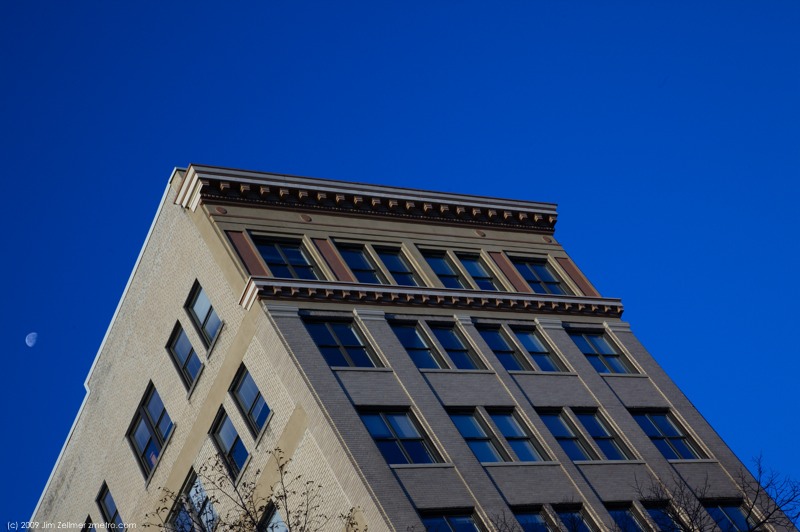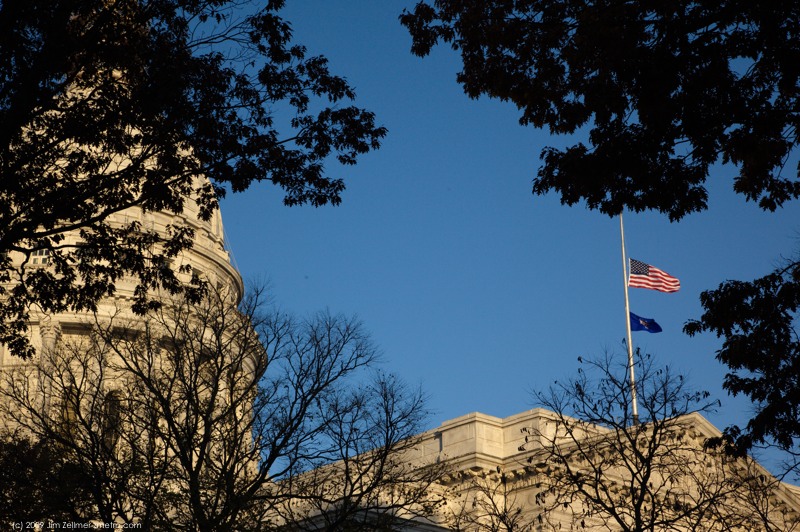The scene is Detroit, a training room at the headquarters of one of the three great US car companies. A group of corporate vice-presidents is attending a course being given by a distinguished management thinker.
“What you are telling us is great,” the VPs say, “but you are talking to the wrong level. You should be speaking to the next tier up.” The next week, working with more senior managers, he hears the same thing. “This is great, but you are talking to the wrong level. You should be speaking with the chief executive.”
The week after that, our thinker finally gets in to see the boss. “This is great,” the CEO says, “but you should be speaking with my subordinates – I’d need their support in order to do it.”
This is a true story, as told by Russ Ackoff, the management thinker in question, who died a few days ago, aged 90. Two key Ackoffian ideas emerge from this tale. First, do not wait for others in the business to start changing things. Go and do it yourself. But second, and more important: never forget that everyone in the business is interconnected, that they are all operating as part of a system, that tinkering with one part of the company is never really enough, and may even make things worse. You need to see the business as a whole, as a complete system, if you want to make lasting improvements to it.
China Channels Monkeybrains
Too much debt got us into this mess, and too much debt will see us out of it. Socialize the risk of a new cycle of open-throttle lending and cling to the monetary system that assures a repeat crisis. Such, approximately, is the global policy-making consensus. Central bankers and finance ministers have achieved an uncommon meeting of the minds. The cure for what ails us is the hair of the dog that bit us, they prescribe, though not in exactly those words.
It’s no small thing that China is especially enamored of the shot-and-a-beer-for-breakfast approach. Nothing about China is small or insignificant nowadays, since the Chinese economy is actually growing. It might, indeed, account for 74% of worldwide GDP growth in the three years to 2010, the International Monetary Fund estimates. Since 2005, China has generated 73% of the global growth in oil consumption and 77% of the global growth in coal consumption. By the looks of things, it accounts for a fair share of the growth in worldwide luxury-car consumption, too:
Another Glorious Saturday Photo

Buffett’s Betrayal….
When I was 14, Warren Buffett wrote me a letter.
It was a response to one I’d sent him, pitching an investment idea. For a kid interested in learning stocks, Buffett was a great role model. His investing style — diligent security analysis, finding competent management, patience — was immediately appealing.
Buffett was kind enough to respond to my letter, thanking me for it and inviting me to his company’s annual meeting. I was hooked. Today, Buffett remains famous for investing The Right Way. He even has a television cartoon in the works, which will groom the next generation of acolytes.
But it turns out much of the story is fiction. A good chunk of his fortune is dependent on taxpayer largess. Were it not for government bailouts, for which Buffett lobbied hard, many of his company’s stock holdings would have been wiped out.
Berkshire Hathaway, in which Buffett owns 27 percent, according to a recent proxy filing, has more than $26 billion invested in eight financial companies that have received bailout money. The TARP at one point had nearly $100 billion invested in these companies and, according to new data released by Thomson Reuters, FDIC backs more than $130 billion of their debt.
To put that in perspective, 75 percent of the debt these companies have issued since late November has come with a federal guarantee. (Click chart to enlarge in new window)
A Glorious November Saturday

German Chancellor Angela Merkel Address to Joint Meeting of Congress
Twenty-years after the fall of the Berlin Wall, German Chancellor Angela Merkel addressed a joint meeting of Congress to discuss issues around the world including Afghanistan, climate change and int’l financial regulation.
‘Puzzlers’ reassemble shredded Stasi files, bit by bit
East German documents provide a crucial piece of history, supporters of the project say, but putting them back together could take hundreds of years. A computerized system would help, but it’s costly.
Reporting from Berlin and Zirndorf, Germany, – Martina Metzler peers at the piles of paper strips spread across four desks in her office. Seeing two jagged edges that match, her eyes light up and she tapes them together.
“Another join, another small success,” she says with a wry smile — even though at least two-thirds of the sheet is still missing.
Metzler, 45, is a “puzzler,” one of a team of eight government workers that has attempted for the last 14 years to manually restore documents hurriedly shredded by East Germany’s secret police, or Stasi, in the dying days of one of the Soviet bloc’s most repressive regimes.
Two decades after the heady days when crowds danced atop the Berlin Wall, Germany has reunited and many of its people have moved on. But historians say it is important to establish the truth of the Communist era, and the work of the puzzlers has unmasked prominent figures in the former East Germany as Stasi agents. In addition, about 100,000 people annually apply to see their own files.
The Inside Story of Wal-Mart’s Hacker Attack
Wal-Mart was the victim of a serious security breach in 2005 and 2006 in which hackers targeted the development team in charge of the chain’s point-of-sale system and siphoned source code and other sensitive data to a computer in Eastern Europe, Wired.com has learned.
Internal documents reveal for the first time that the nation’s largest retailer was among the earliest targets of a wave of cyberattacks that went after the bank-card processing systems of brick-and-mortar stores around the United States beginning in 2005. The details of the breach, and the company’s challenges in reconstructing what happened, shed new light on the vulnerable state of retail security at the time, despite card-processing security standards that had been in place since 2001.
In response to inquiries from Wired.com, the company acknowledged the hack attack, which it calls an “internal issue.” Because no sensitive customer data was stolen, Wal-Mart had no obligation to disclose the breach publicly.
Wal-Mart had a number of security vulnerabilities at the time of the attack, according to internal security assessments seen by Wired.com, and acknowledged as genuine by Wal-Mart. For example, at least four years’ worth of customer purchasing data, including names, card numbers and expiration dates, were housed on company networks in unencrypted form. Wal-Mart says it was in the process of dramatically improving the security of its transaction data, and in 2006 began encrypting the credit card numbers and other customer information, and making other important security changes.
“Wal-Mart … really made every effort to segregate the data, to make separate networks, to encrypt it fully from start to finish through the transmission, ” says Wal-Mart’s Chief Privacy Officer Zoe Strickland. “And not just in one area but across the different uses of credit card systems.”
Wal-Mart uncovered the breach in November 2006, after a fortuitous server crash led administrators to a password-cracking tool that had been surreptitiously installed on one of its servers. Wal-Mart’s initial probe traced the intrusion to a compromised VPN account, and from there to a computer in Minsk, Belarus.
The Best Summary (to date) of Taxpayer Funded Events that Lead to Goldman Sachs’ Survival and Recent Large Payouts
A few weeks ago, shortly after Goldman Sachs reported its latest blowout quarter, the firm’s chief executive, Lloyd Blankfein, spoke at a Fortune magazine breakfast.
In normal times, Mr. Blankfein might have been forgiven for bragging a bit about the just-reported quarter — over $3 billion in profit on $12 billion in revenue. It had generated some $6 billion just in one division: fixed income. It had more than $160 billion in cash or cash equivalents on its balance sheet. And of course it had long since repaid, with interest, the $10 billion it had accepted from the Treasury Department during the darkest days of the crisis.
But of course those weren’t the numbers the media and the public had focused on in the wake of Goldman’s earnings. Instead, people were fixated on the $5.3 billion the firm had set aside for its executives’ year-end bonuses. Added to first and second quarter set-asides of $4.6 billion and $6.6 billion, the firm had put aside $16 billion so far this year for employee bonuses. Nearly 50 percent of the firm’s revenue was going toward compensation. And there was still one more quarter to go!
Was it fair, commentators kept asking, that barely a year after the taxpayers had essentially saved the financial system, this firm that took government capital should now be paying multimillion-dollar bonuses? Was it right? Which, not surprisingly, is what Fortune’s managing editor, Andrew Serwer, asked Mr. Blankfein within minutes of taking the stage.
In private, Goldman executives are scornful of the sentiment behind this question. Their view, in essence, is that they should be applauded for being able to pay such big bonuses, because it means their business is successful. People who want them to pay less, they believe, want them to fail.
But Mr. Blankfein, a charming, funny man who has been Goldman’s boss since 2006, is far too smart to say that out loud. Nonetheless, what he did say was revealing. Treasury’s original decision to use the Troubled Asset Relief Program to shore up the banks’ capital, Mr. Blankfein said, “was a sensible thing to do at the time.”
God’s Glorious Fall Colors

On display in Madison today. A wonderful, sunny day after several rainy, cold episodes.

